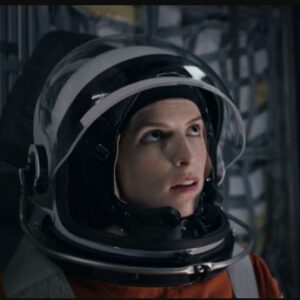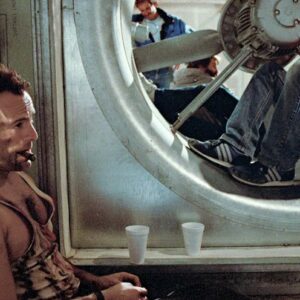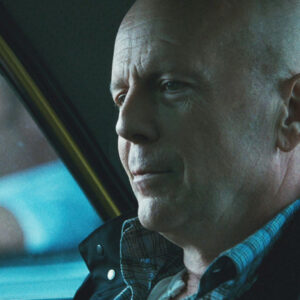Derek Cianfrance’s The Place Beyond the Pines is an intricate and poignant narrative woven through the lives of its multifaceted characters. Released in 2012, the film, featuring Ryan Gosling, is a masterclass in storytelling, combining elements of fate, family, and redemption with an array of subtle, often overlooked details. In its essence, the film explores the echoes of choices made and the reverberations they cast across generations. Here, we delve into five enigmatic aspects of the film that might have flown under the radar, unraveling the layers that make The Place Beyond the Pines a rich, complex piece of cinema.
1. The Significance of the Motorcycle
From the moment Ryan Gosling’s character, Luke Glanton, roars onto the screen on his motorcycle, it becomes a symbol of his restless pursuit of freedom and escape. Yet, the motorcycle represents more than just a means of transportation. It is an emblem of Luke’s dual nature—a life of thrill and danger that contrasts sharply with his underlying quest for redemption. Cianfrance employs the motorcycle not only as a vehicle of action but as a narrative device that propels the plot and underscores the thematic elements of the film.
The motorcycle also embodies the cycle of violence and crime that perpetuates through the characters’ lives. As Luke’s path of destruction unfolds, the motorcycle’s roar becomes a haunting reminder of the consequences of his choices. The film’s climax, involving a high-stakes chase, further amplifies the motorcycle’s role in driving the narrative to its tragic conclusion.
2. The Role of the Family Photographs
Family photographs serve as silent witnesses to the unfolding drama, subtly bridging the past and present. Throughout the film, these photographs offer glimpses into the characters’ histories and their emotional landscapes. The imagery of family photos, whether in the Glanton household or the Cooper home, serves as a poignant reminder of the families’ fractured relationships and the passage of time.
In particular, the recurring motif of photographs underscores the idea of legacy and how the past continues to shape the present. The film’s exploration of identity and family ties is often mirrored in the photographs that adorn the characters’ lives. This seemingly innocuous detail becomes a powerful symbol of the burden of the past and the inevitability of confronting it.
3. The Intriguing Use of Colors
Cianfrance employs a meticulous color palette throughout The Place Beyond the Pines, adding a layer of visual storytelling that enhances the film’s emotional depth. The dominant use of blues and greys creates a somber, reflective mood, mirroring the film’s themes of regret and disillusionment. The cold, muted tones evoke a sense of emotional distance and the harsh reality faced by the characters.
However, there are moments where warmer hues emerge, signifying fleeting moments of hope or connection. These instances of color contrast highlight the fleeting nature of happiness and the transient connections between characters. By manipulating color, Cianfrance subtly guides the audience’s emotional responses and enriches the narrative’s visual texture.
4. The Symbolism of the Forest
The forest in The Place Beyond the Pines acts as a metaphorical labyrinth, representing the characters’ internal struggles and their quest for redemption. It is within the forest that pivotal moments of self-discovery and confrontation occur, reflecting the characters’ journey through their own moral and existential dilemmas.
The forest’s dark, dense foliage symbolizes the uncertainty and complexity of the characters’ lives. It is a place where the past is confronted, and choices are made with far-reaching consequences. By positioning crucial scenes within this setting, Cianfrance emphasizes the characters’ entrapment in their own fates and the difficulty of navigating their inner turmoil.
5. The Underlying Soundtrack
The film’s soundtrack, composed by Mike Patton, serves as an evocative backdrop that enhances the emotional weight of the narrative. The score’s haunting melodies and sparse arrangements reflect the film’s themes of despair and longing. The music, often subtle yet profoundly affecting, complements the film’s tone and underscores the characters’ internal conflicts.
One of the most intriguing aspects of the soundtrack is its ability to mirror the characters’ emotional states without overwhelming the narrative. The music’s minimalism allows the film’s visual and thematic elements to take center stage while subtly guiding the audience’s emotional journey. The interplay between the score and the film’s visuals creates a rich, immersive experience that deepens the narrative’s impact.
Conclusion
The Place Beyond the Pines is a film rich in thematic depth and cinematic craftsmanship. Through the subtle use of symbols, visual motifs, and sound, Derek Cianfrance crafts a narrative that explores the intricate web of fate, family, and redemption. The five mysterious details highlighted here offer a deeper understanding of the film’s layered storytelling and its exploration of the human condition. Each detail, from the symbolic motorcycle to the evocative soundtrack, contributes to the film’s complexity, making it a compelling and thought-provoking experience.
In uncovering these hidden layers, we gain a greater appreciation for Cianfrance’s vision and the profound emotional resonance of The Place Beyond the Pines. The film remains a testament to the power of subtle storytelling and the impact of seemingly minor details in creating a rich, immersive narrative tapestry.





